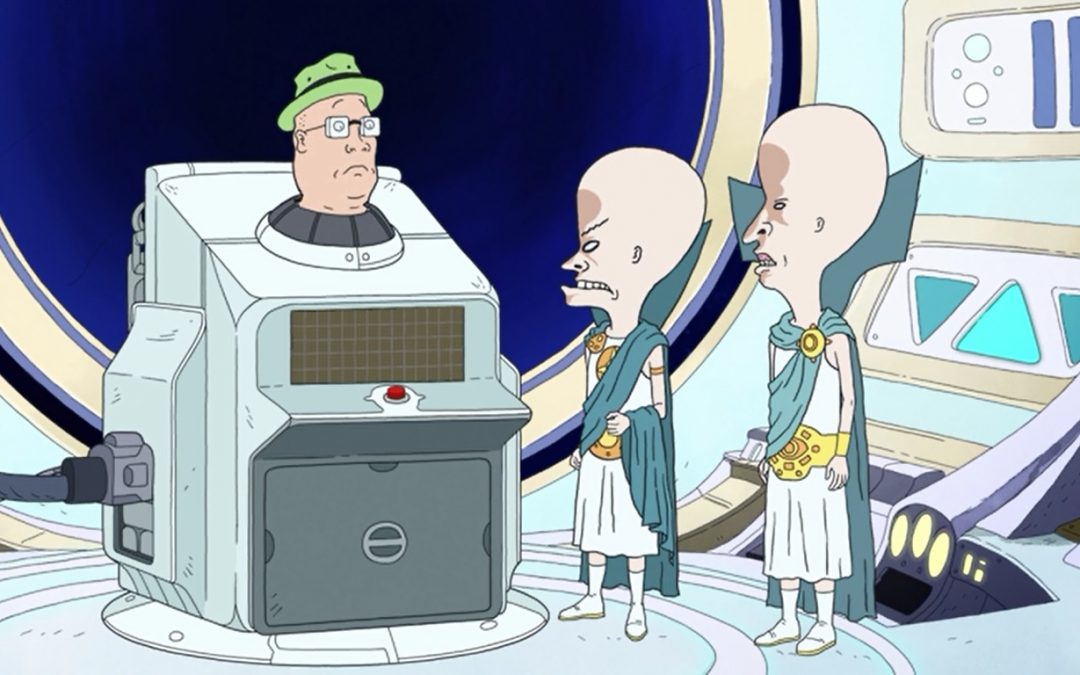John Frizzell is a renowned American film composer recognized for his collaboration with Mike Judge. His impressive portfolio includes scoring music for iconic projects such as Beavis and Butt-Head Do America, Office Space, and the recent Beavis and Butt-Head Do the Universe (2022), among others. With a diverse range of film credits including Alien Resurrection, Dante’s Peak, Legion, and Zappa, Frizzell’s contributions have left a notable impression on the industry. I had the opportunity to discuss with John about his recent involvement with the Beavis and Butt-Head revival, particularly his composition work for the episode Abduction, utilizing Dorico music notation software. Keep reading to discover further details about John’s pivotal role in this project, as well as gain insights into his creative workflow.
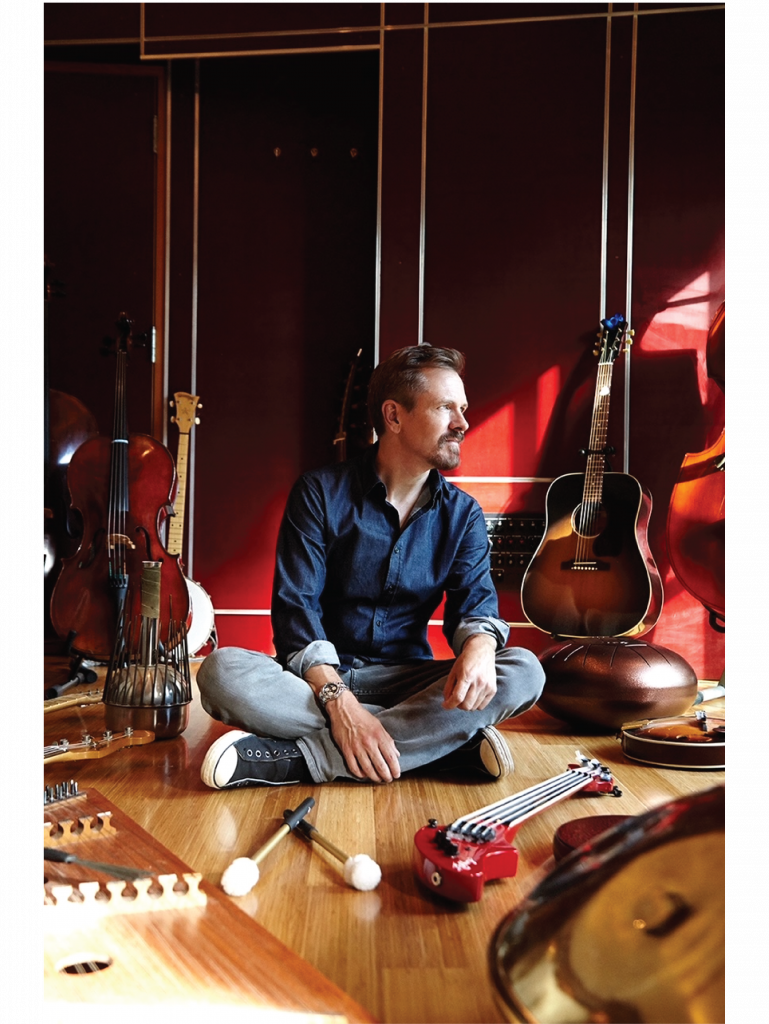
Film Composer John Frizzell
AN: Hi John, thanks for taking the time to talk to me. Can you tell us about your experience working on the Beavis And Butt-Head revival episode Abduction for Paramount+?
JF: Abduction is the final episode of season 2 and features Smart Beavis ands Smart Butt-Head abducting Tom Anderson to fulfil an intergalactic mission. This was the first time since the 2022 film Beavis and Butt-Head Do the Universe that the ‘smart’ versions of the boys were so prominently featured in the series and I wanted to maintain the classic sci-fi orchestral tone I established with my score to their film debut. This led to me composing almost completely in Dorico for the first time. Previously, I had used Dorico for orchestration, and it is of course great for preparing parts, but having become more familiar with the features that allow for synchronization to picture, I felt it was time to change the way I have been composing for almost thirty years.
AN: How did you first become involved with this project, and what drew you to it?
JF: In 1996, I pitched the idea to Mike Judge that the first Beavis and Butt-Head film Do America should be scored with a full symphonic orchestra and choir and rely more on a classic cinematic approach rather than attempting to incorporate rock directly into the score. Mike loved the idea and that score to Do America sat in contrast to all the great songs licensed into the soundtrack. The film was a smash hit. Before composing, I had conversations with the legendary Elmer Bernstein and he coached me on how to write a score that functions as the comedic ’straight man’. This is the idea that Bernstein used in his legendary comedy scores for films like Stripes, Animal House and Airplane. So my involvement with Beavis and Butt-Head goes back almost three decades now and it’s pretty exciting with the recent mega-viral SNL sketch featuring Ryan Gosling that the two idiots are just as relevant and funny today as they were in the 1990s!
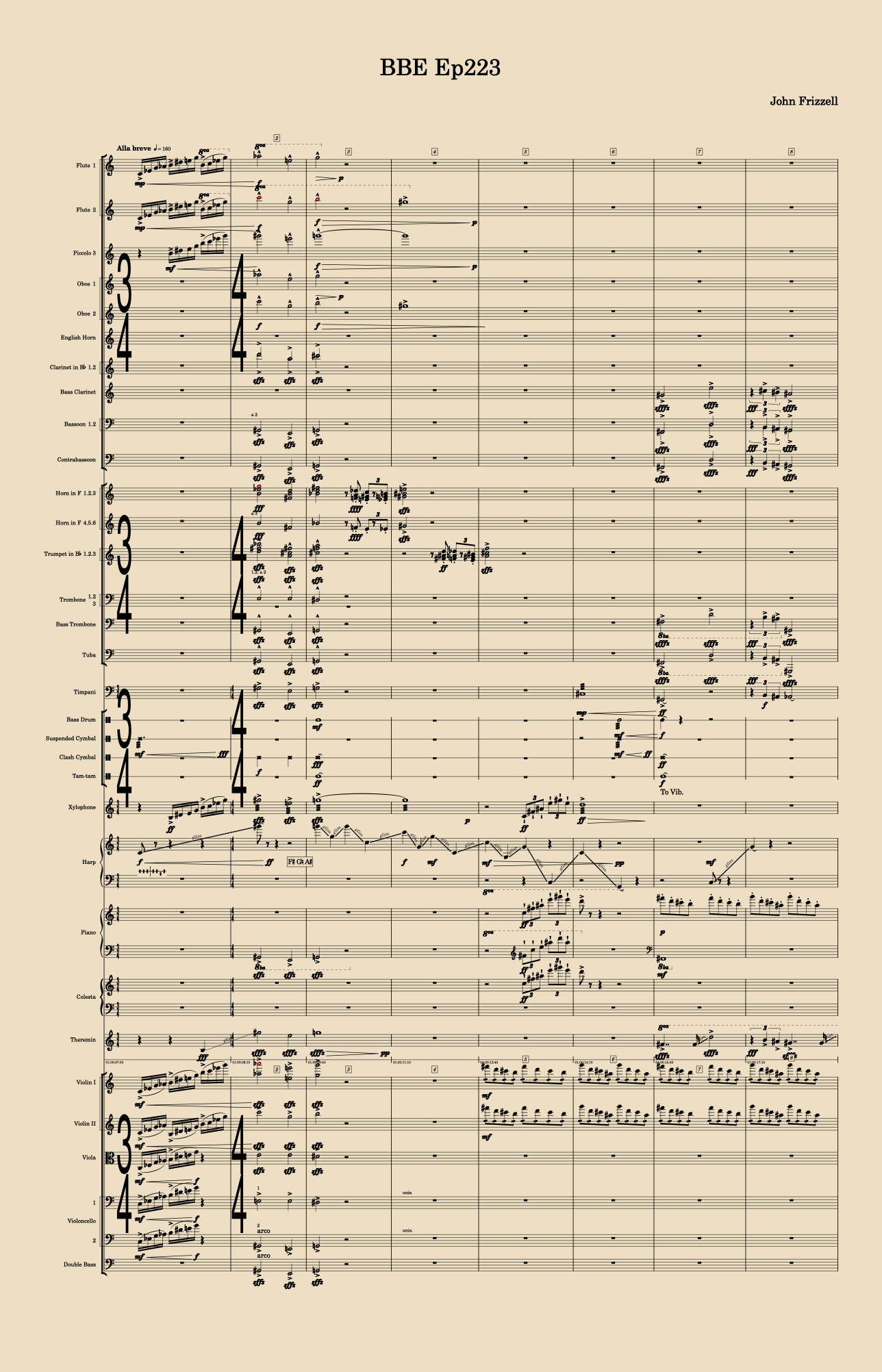
Pages from the score for ‘Abduction’ in Beavis & Butt-Head. The music is not fully notated for live recording, as MIDI playback was used for the final version. While there are inconsistencies for a live performance, this approach functioned as intended.
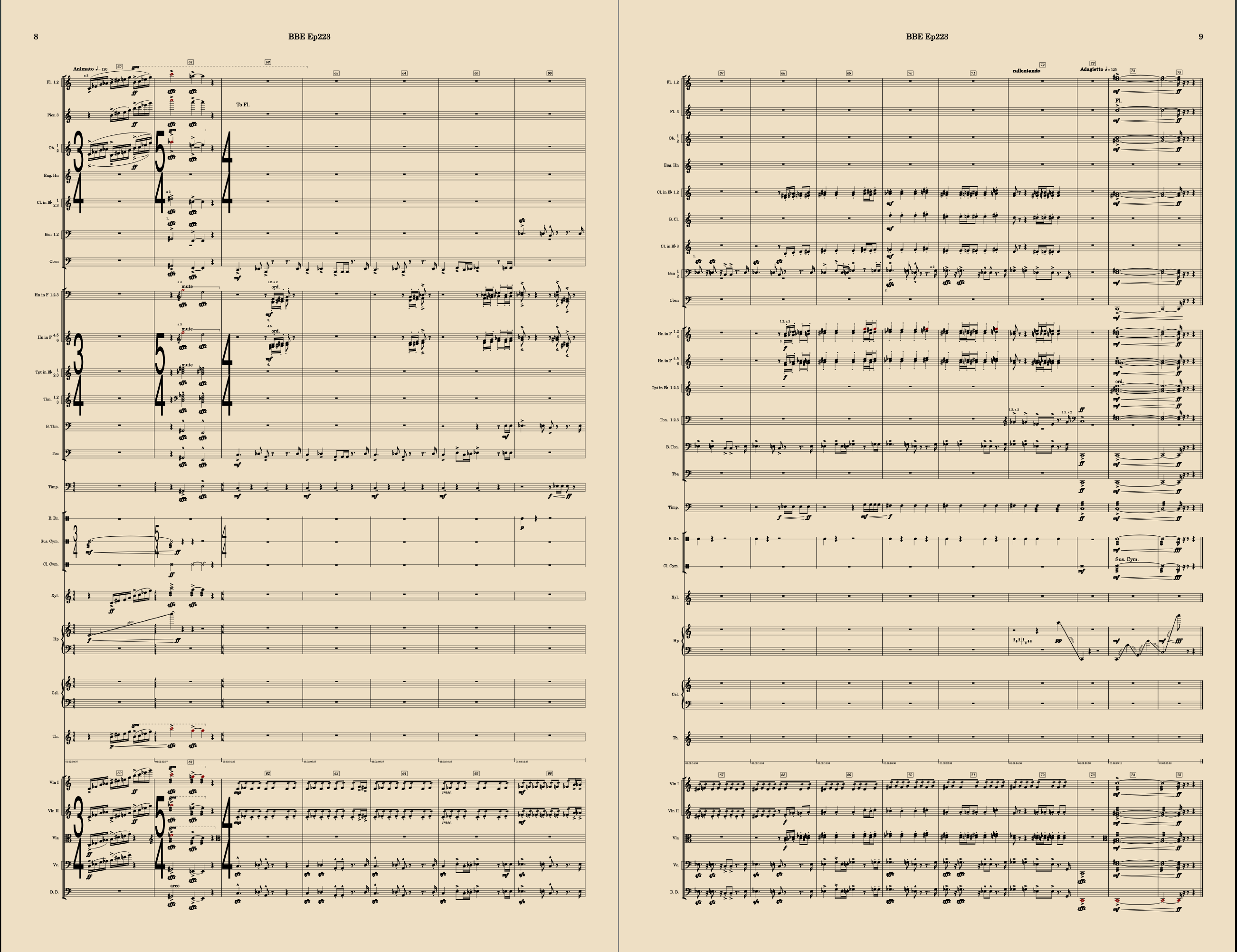
Pages from the score for ‘Abduction’ in Beavis & Butt-Head. The music is not fully notated for live recording, as MIDI playback was used for the final version. While there are inconsistencies for a live performance, this approach functioned as intended.
AN: You have also written the score for the film Beavis and Butt-head Do the Universe, for which you won the HMMA award. Firstly, congratulations! Could you share any memorable moments or challenges you encountered while composing the music for this film?
JF: Thank you! Do the Universe was my first time using Dorico. A portion of the score was orchestrated in Dorico by Nick Cimity and myself. I was skeptical that I could learn the program well enough in a few weeks to actually use it for orchestration, and I have always been intimidated by the learning curve of other notation apps, but Dorico was so intuitive and inherently musical it was incredible. The Synchron team did an amazing job not only in recording the score to the film but in handling all the music preparation including the work in Dorico. After orchestrating in Dorico I was curious about actually composing with it.
Do the Universe was my first time using Dorico. A portion of the score was orchestrated in Dorico by Nick Cimity and myself. I was skeptical that I could learn the program well enough in a few weeks to actually use it for orchestration, and I have always been intimidated by the learning curve of other notation apps, but Dorico was so intuitive and inherently musical it was incredible.
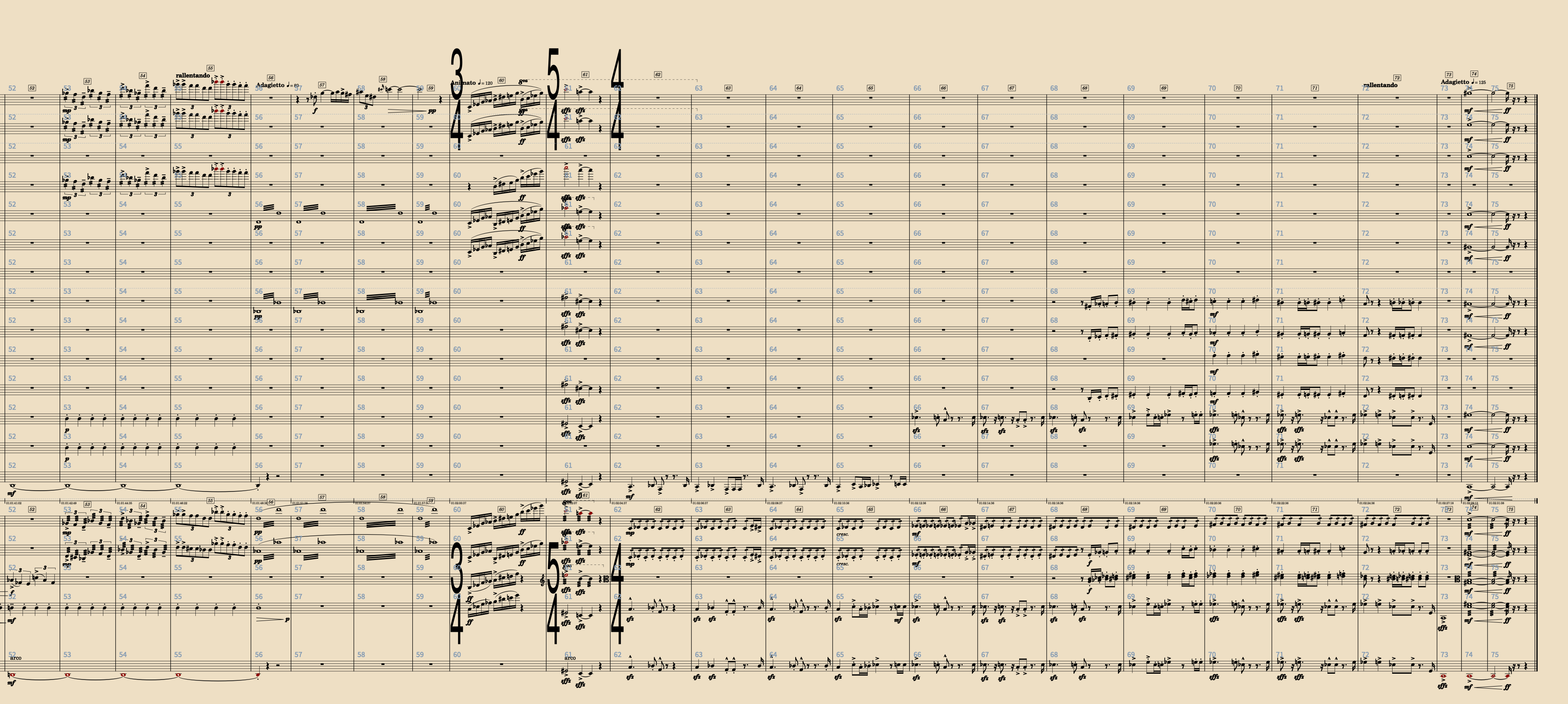
AN: Could you elaborate on how you utilized Dorico specifically for composing to picture, and what role it played in your workflow?
JF: On Abduction, I did start by spending some time working at the piano figuring out some thematic ideas. Then, in Dorico, I created a detailed piano sketch that was precisely synchronized to picture. This is where I found that using markers and tempo changes in Dorico is very intuitive and musical. In a traditional DAW, creating a rallentando that feels natural, takes quite a bit of work. Dorico solves this. Galley view is very helpful to me when composing as I am not ready to think about any sort of page formatting yet. The instrument filters solve huge issues that I have never resolved in a traditional DAW. If I want to view my instruments that are playing my bass line, I can easily see that. If I just want to work on strings or woodwinds, or the melody, or filagree, that is easy too. Instrument filters allow me to quickly and clearly focus my attention on the part of the music I need to address, be it a section of the music or a concept within the music. In a traditional DAW, I get frustrated trying to see everything all at once, it’s difficult to engage with multiple parts at a time, but in Dorico this is easy as it is the nature of notation to reveal this. I think it comes down to the idea that the invention of the orchestral score served as a compositional tool in and of itself. Dorico takes the best aspects of a traditional DAW and superimposes these into an already functional system of notation that has worked for hundreds of years.
In Dorico, if I want to view my instruments that are playing my bass line, I can easily see that. If I just want to work on strings or woodwinds, or the melody, or filagree, that is easy too. Instrument filters allow me to quickly and clearly focus my attention on the part of the music I need to address, be it a section of the music or a concept within the music.
AN: What features of Dorico do you find most beneficial for composing music for TV and film, especially when working with orchestral scores?
JF: Playback from Dorico is amazing and probably the single most important feature that makes it so valuable for film scoring. About 20 years ago, composer Frederik Weidmann and myself constructed an environment in Logic that converted notation symbols into MIDI in an attempt to create orchestral playback from the score page. Some parts of it worked, but it was clunky, as it was an uphill battle to get Logic to do what we wanted. I tried at the time to spread the word and create enthusiasm for the idea of composition on a score page but the technology and the world were not ready. Direct playback from Dorico is astounding, and when you add in the functionality of NotePerformer, and use a great library like those from Spitfire and Vienna Ensemble (and others), the results are revolutionary. Being able to create a truly stunning-sounding orchestral mock-up that is easily exported as either a full mix or stems is very exciting to me. I think for the last few decades, film music has been strongly influenced by what sounded good when playing the libraries from a traditional DAW. There were many things that an orchestra could do that simply were too difficult or impossible to program from a DAW. The capabilities of the DAW actually shaped the music by limiting the possibilities of what could be made into a professional-sounding demo. Dorico changes that, it opens up a much more complete range of possibilities to the film composer. With the playback abilities of Dorico, I can easily meet the technical and schedule demands of a project.
Direct playback from Dorico is astounding, and when you add in the functionality of NotePerformer, and use a great library like those from Spitfire and Vienna Ensemble (and others), the results are revolutionary. Being able to create a truly stunning sounding orchestral mock-up that is easily exported as either a full mix or stems is very exciting!
AN: As a composer with extensive experience in the industry, what advice would you give to aspiring composers who are interested in working on similar projects?
JF: I think we are at a pivotal and critical time in film music. Obviously we are all thinking about AI and a potentially strange dystopian landscape ahead of us. I don’t have any real answers about that, but I can feel confident that it is an important time to do something new and do it very well. I think composing in Dorico offers that possibility to shed the habits and limitations of the traditional DAW and rediscover many of the concepts that originally defined orchestral film scores.
AN: Finally, what message would you like to convey to fellow composers about your experience using Dorico for composing to picture, and why it’s the music notation software of your choice?
JF: Try it. It will definitely push most composers to go back and study the classics, and I love doing that. Dorico has reawakened the original passion I felt for orchestral music by reconnecting to me to its original methods. I find myself thinking in notation these days which is very liberating as I am no longer bound by the limitations the traditional DAW imposes.
Dorico has reawakened the original passion I felt for orchestral music by reconnecting to me to its original methods.
AN: Thanks for taking the time to talk with me about your work, John!
You can watch Beavis and Butt-Head, streaming now on Paramount+. If you’d like to try composing to picture in Dorico yourself, you can download a free 60-day trial from our web site, and you can check out our short video tutorial series on composing to picture on YouTube.

